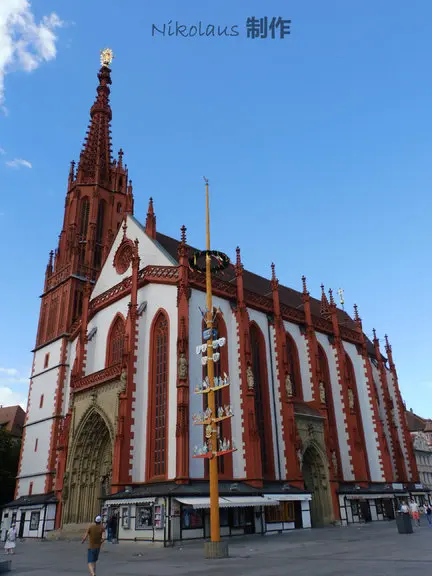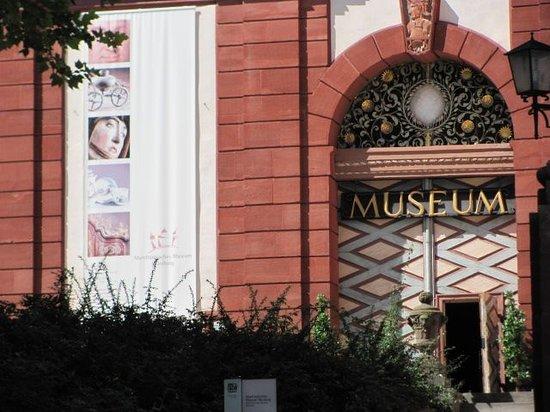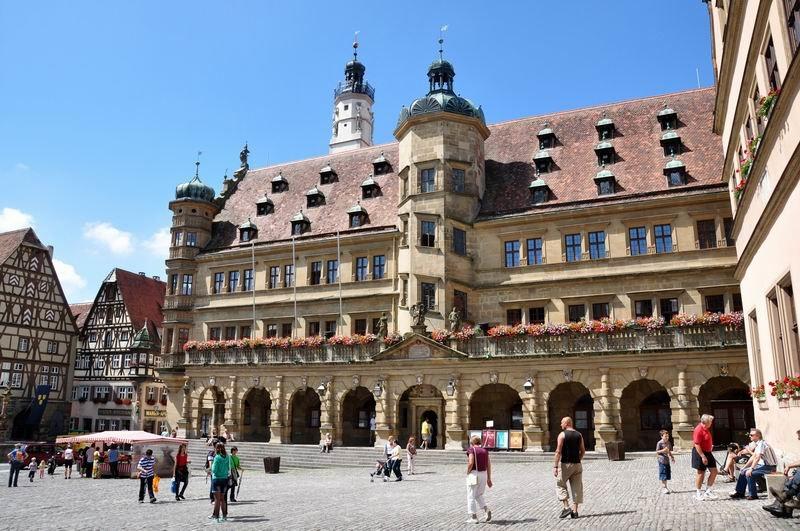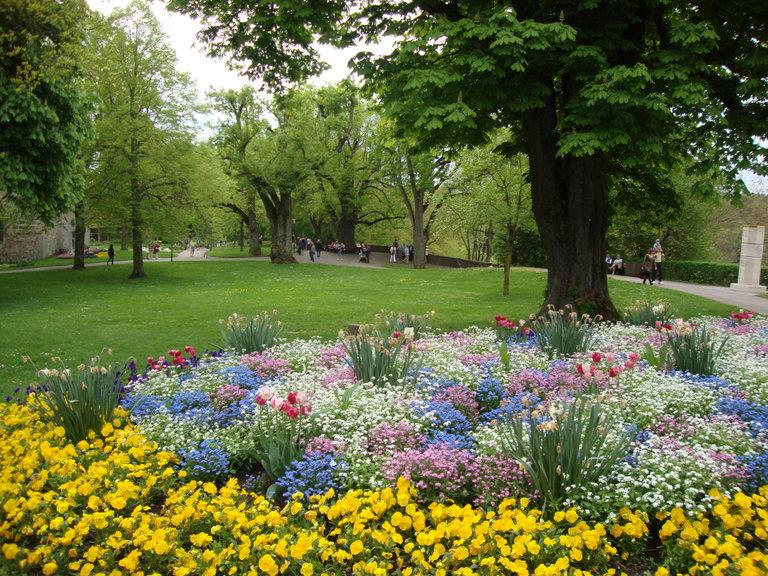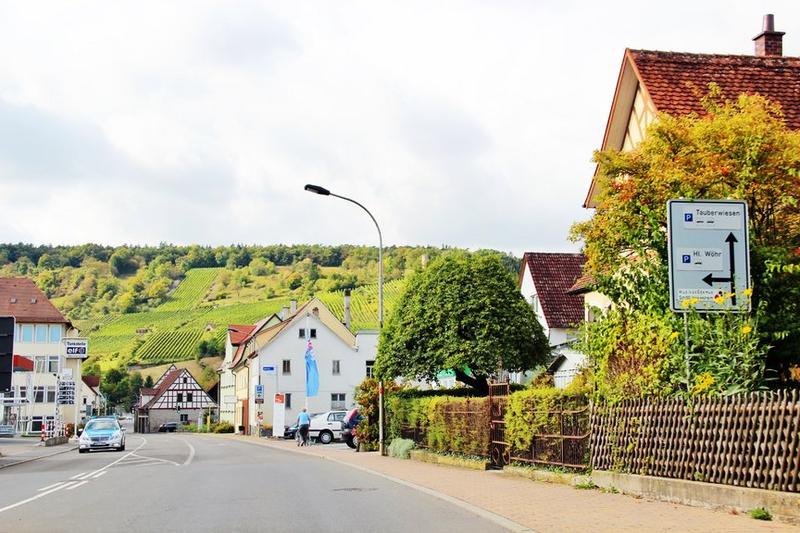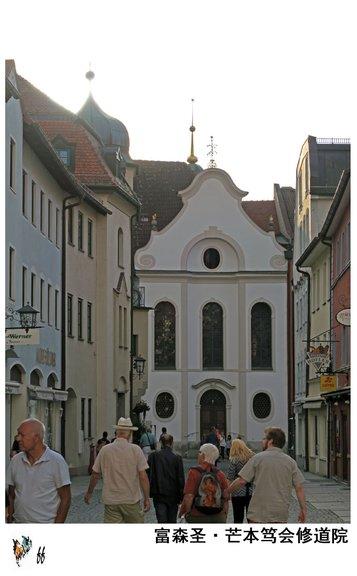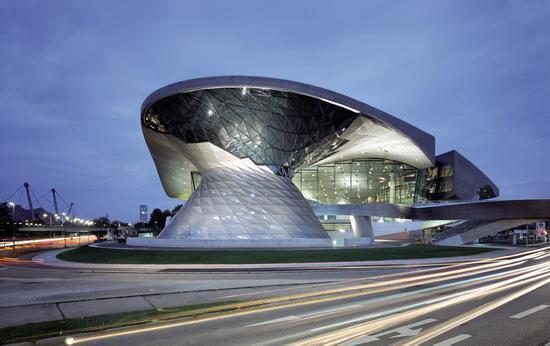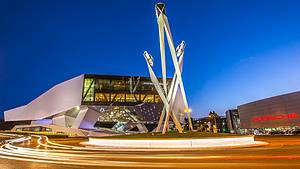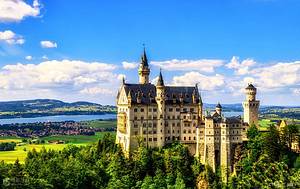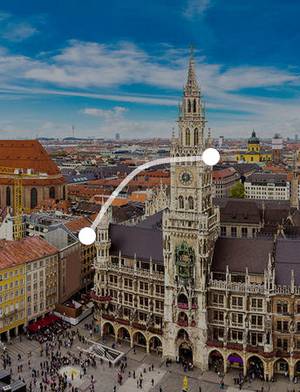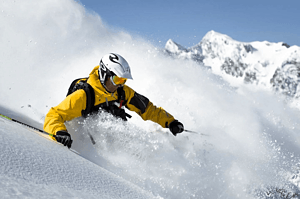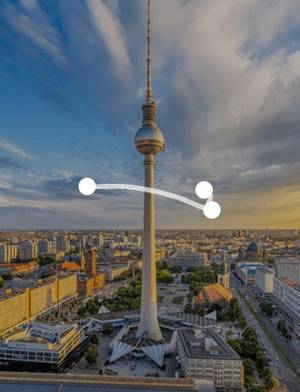8-day self-driving tour along Germany's Romantic Road
10 cities |
37 attraction(s) |
total distance 180
km
 TIPS
TIPS
Day1
Day2
Day3
Day4
Day5
Day6
Day7
Day8
Day1: Frankfurt
5 attraction(s) ·
2 km
1
Frankfurter Romer
The Roman Square is the town hall square in Frankfurt since the Middle Ages. Located in the center of the old town of Frankfurt, north of the Main River bridge, the west side is the town hall, the southwest side is the Weitheim residence, a beautiful residential building in the late Renaissance style (1600). The south side is the St. Nicholas Church built in the 13th century, made of red sandstone. The east side is the half-timbered houses built between the 15th and 18th centuries. The north side is a stone house built in the style of an Italian palace (1464). In the center of the square stands the Justice Fountain, built in 1543. The Frankfurt Cathedral, the birthplace of the city, is just 200 meters to the east. In 1944, the square was heavily bombed by the British Air Force and was almost completely destroyed, but was rebuilt after the war.
1
km
2
The Frankfurt City Hall was once a place for elections and coronations of emperors. It is a building located in the city center of Frankfurt's old town, consisting of three interconnected medieval-style private residences. The entire complex is named after one of the oldest and most luxurious houses called Zum Römer. It now serves as a registry office and the mayor's office. The Emperor's Hall inside preserves portraits of 52 rulers. Serving as Frankfurt's earliest government office, it became the City Hall in 1404 and was restored to its original appearance in the 1980s. It is a typical German-style architecture and also one of the symbols of Frankfurt. The Roman Square in front of it is worth a visit.
1
km
3
This is one of the most famous churches in Frankfurt, built for St. Bartholomew in 1239 and became the official site of coronation for the Holy Roman Emperors in 1365. Ten emperors were crowned here between 1562 and 1792. A major fire in August 14, 1867, almost destroyed the entire church, which was then rebuilt in neo-Gothic style. However, it was heavily damaged again during World War II, and the current building was constructed in 1950-1953.
In summer, you can buy an ice cream cone, sit on the square in front of the church, and enjoy the slow-paced life in Europe.
1
km
4
Old St. Nikolai is a charming medieval Lutheran church, also known as Alte Nikolaikirche. It is worth a visit as everything around it is so charming and takes you back to the Middle Ages. The church is located at the intersection of two important trade routes, east-west and north-south, and was built to commemorate the patron saint Nicholas of medieval wholesalers and traders.
1
km
5
This steel-framed pedestrian bridge spans the Main River, connecting the southern and northern banks of Frankfurt. Construction of this Neo-Gothic style bridge began in 1869 and underwent multiple renovations before taking its current form in 1993.
Day2: Wuerzburg
7 attraction(s) ·
8 km
1
The most eye-catching building in the city center that attracts tourists is the Residenz, one of the most outstanding examples of late Baroque architecture in Germany. It is one of the largest and most magnificent Baroque royal palaces in Germany, consisting of the palace, gardens, and square. The palace was designed and built in collaboration by baroque architecture experts Balthasar Neumann and Maximilian von Welsch in 1719. The palace is not only representative of the residence of the Würzburg prince-bishops, but also a pinnacle of European feudal monarchy. The Würzburg Residence is the residence of the ruling princes and bishops of Würzburg, commissioned in 1720 and took 60 years to complete. Its exterior is elegant, with luxurious Baroque decorations in its interior. Particularly notable is the ceiling of the grand staircase, which features the largest trompe-l'oeil fresco in the world, painted by artist Tiepolo and depicting the four continents known at that time - Europe, Africa, America, and Asia. Additionally, there are beautiful rooms such as the White Hall, Imperial Hall, and Mirror Cabinet. However, it is worth noting that the Würzburg Residence was heavily damaged during World War II, and what is seen today is the result of post-war restoration. The Würzburg Residence is located in the southeastern part of the old town, and outside the residence, visitors can also freely visit the splendid Hofkirche and elegant Hofgarten.
2
km
2
This Romanesque church, facing the old bridge over the Main River, is one of the oldest and most beautiful churches in Wurzburg. It was built in 1040 and has been added various influences from Gothic, Renaissance, and Baroque styles throughout the centuries. Today, its two towering red and white brick towers are one of the most iconic sights in the old town. The church itself is over a hundred meters long and very grand. The Schönborn Chapel to the north is the burial site of the Schönborn family, the former palace bishops of Wurzburg, and is decorated uniquely. The Cathedral Museum (Museum am Dom) and the Cathedral Treasure Chamber (Domschatz) are also available for visitation.
2
km
3
Main River Old Bridge is the most beautiful bridge over the Main River in Würzburg. It is located at the foot of the Marienberg Castle and is a must-pass route from the castle to the old town. The bridge, built in the 15th century, has sculptures of saints and local historical figures. It is now a pedestrian bridge where you can enjoy the magnificent views of Marienberg Castle, vineyards on the hill, clear flowing waters of the Main River, and the beautiful spires of churches in the old town of Würzburg.
1
km
4
The Town Hall building in Würzburg, Germany, includes a more ancient section known as "Grafeneckart". It is situated between the main seat Cathedral and the Old Main Bridge over the Main River. This red-brown building features a 55-meter-high tower and many ancient decorations on its walls. The construction of this building began in 1180, making it over 800 years old. The current operational Town Hall is located behind this old building.
1
km
5
The Notre-Dame Cathedral is situated next to the House of the Falcons. It was originally a destroyed synagogue. During World War II, the cathedral was burned down and the reconstruction was completed between 1948 and 1961.
4
km
6
On the west bank of the Main River, this castle fortress on Marienberg is the symbol of Würzburg. The castle was built in 1201 by the ruling prince-bishops of Würzburg and has been inhabited by them until the completion of the Würzburg Residence. The medieval-style castle was transformed into a Baroque style in the 17th century, but it still maintains an overall dignified and simple appearance. The interior of the castle is now used as museums that narrate the history of the region and the bishop's family. From the Old Bridge, you can walk along the footpath up to Marienberg Castle, which takes about 30 minutes. From the top of the hill, you can enjoy a panoramic view of Würzburg's red-roofed cityscape. At the foot of Marienberg Castle, there are vast vineyards that showcase the local character. Moreover, the mountain paths leading to the castle are part of the "Wine Hiking Path" on Marienberg.
1
km
7
This exhibition showcases the history, cultural relics, and artworks of the Franconian region in the Main River basin.
Day3: Romantic Road > Rothenburg Ob Der Tauber
6 attraction(s) ·
47 km
1
Bad Mergentheim
Bad Mergentheim is a small town on the Romantic Road, famous for its hot springs. The beautiful scenery and unique architectural style of the town add a lot of charm to this little town. Bad Mergentheim is located 50 kilometers from Würzburg, allowing tourists to break the fatigue on the long journey and enjoy its unique healing spring water and charming scenery.
45
km
2
One of the iconic landmarks in Rothenburg is located at the south end of the old town. The cobblestone road splits into two, forming a "Y" shape and has different slopes following the terrain. Along the sides of the path are beautiful traditional timber-framed houses and a small fountain. This is a miniaturized representation of the unique street view of Rothenburg.
1
km
3
The entire city of Rothenburg is surrounded by medieval-style city walls, which are a total length of 3.5 kilometers. 2.5 kilometers of the walls are open to visitors. While the squares and streets in the city are filled with various tour groups, the long wooden covered walkways on the city walls are still a quiet place to stroll and walk around half of the city. The walls have been restored in the past forty years, and the names of the donors are engraved on the bricks and stones (donations are still ongoing, you can inquire at the visitor center if interested). Between the city walls, there are various city gates and tower, including the oldest North Gate White Tower (Weißer Turm), the Markus Tower on the arched gate (Markusturm), the Hospital Gate (Spitaltor) with defensive fortifications to the south, the Heidelberg Gate (Sieberstor) located next to the most beautiful street corner, and the Castle Gate (Burgtor) leading to the Castle Garden, each with its own unique features.
2
km
4
The town hall on one side of Marktplatz in Rothenburg is a blend of Gothic and Renaissance styles, dating back to the 14th century. Visitors can climb up to the 52-meter-high clock tower platform (with 220 steps in total) to enjoy a panoramic view of the town. The market square, with the town hall as a backdrop, is also the center of the Christmas market.
1
km
5
The Castle Garden is located at the western end of Rothenburg, accessible through the castle gate (Burgtor). It is a beautiful garden with lush trees, blooming flowers, and romantic vine pergolas, creating a poetic atmosphere. More importantly, it offers a panoramic view of the Tauber Valley, with greenery, ancient houses, and murmuring streams. If you have time, you can also take a walk along the path and stroll through the Tauber Valley all the way to the Double Bridge by the river.
1
km
6
This is the most important church in the city of Rothenburg, with its Gothic architecture dating back to the 14th century. The church houses the Holy Blood Altar, depicting the scene of the Last Supper and said to contain the holy blood of Christ.
Day4: Dinkelsbuhl > Noerdlingen
3 attraction(s) ·
34 km
1
33
km
2
St. Georg Church was built in the 15th century, it is a late Gothic architecture. The church bell tower is 89.90 meters high. The bell tower is a symbol of the small town of Nadelingen and is fondly referred to as "Daniel" by the locals.
2
km
3
Nördlingen wall
On the romantic road, there is a well-preserved city wall, even without modern improvements and repairs, people can still walk along it. This city wall has witnessed the changes of history, and also carries people's emotions and memories. Walking along the city wall, it feels like traveling through a tunnel of time, experiencing the weight and depth of history. Walking on the city wall, you can overlook the surrounding scenery and buildings, feeling the vitality and beauty of the city. This is a different kind of romantic journey, allowing people to gain different experiences and satisfaction in memories and insights.
Day5: Augsburg
6 attraction(s) ·
6 km
1
Schleissheimer Palace is located next to the wide Maximilianstrasse and was built between 1765-1770. It is a Rococo-style palace that includes the German Baroque Gallery (Deutsche Barockgalerie) and the Bavarian State Gallery (Staatsgalerie).
3
km
2
Although the exterior of the Church of St. Anna is plain, it played a significant role during the Reformation. The church houses a large collection of treasures, including the Fugger Chapel, the Goldsmith Chapel, and the Luther Staircase Museum.
1
km
3
Town Hall Square is the heart of Augsburg, with the adjacent Town Hall building featuring Renaissance architecture. At the top of the building is a 4-meter-high pinecone-shaped decoration, which is the symbol of Augsburg. The meticulously restored Golden Hall (Goldener Saal) is the main conference hall in Augsburg, adorned with magnificent golden wall paintings. The Perlachturm, located next to the Town Hall, offers a panoramic view of the entire city.
1
km
5
Fuggerei, founded in the 16th century, is the world's oldest social housing complex for impoverished Catholics. Over 100 people still live here. Visitors with tickets can explore the museum in the courtyard to learn about the lives of past residents.
3
km
6
The theater was originally the historic Saint Spirit Hospital, with the first floor serving as a puppet theater and the second floor as a puppet museum.
Augsburger Puppenkiste (Augsburg Puppet Theater) performs modern and traditional fairy tale puppet shows, which are highly entertaining. The sets, props, and costumes are whimsical and finely crafted, making it enjoyable even for those who don't understand German.
Day6: Munich > Fussen
4 attraction(s) ·
73 km
1
Landsberg am Lech is located about 55 kilometers west of Munich and about 38 kilometers south of Augsburg. It is situated on the Romantic Road and is one of the sunniest cities in Germany according to the German Weather Service. It is the largest city in the Lech River region between old Bavaria and Swabia and serves as a central city. Landsberg is located on the banks of the Lech River, with a high and advantageous terrain. Its old town is beautiful and well-preserved.
66
km
2
Neuschwanstein Castle has undoubtedly become a symbol of German tourism, it is the most famous and visited castle in Germany. Located on a hill in the southern border of Germany, in the Alps, this masterpiece of King Ludwig II has a fairytale-like appearance and scenery. The interior of Neuschwanstein Castle is also very luxurious, but it cannot hide the tragic fate of King Ludwig II. Legend has it that King Ludwig II developed a strong interest in knight legends and decided to recreate these scenes in his own castle after visiting Wartburg Castle in Thuringia. The construction of Neuschwanstein Castle began in 1869, and when King Ludwig II passed away 17 years later, only the exterior facade had just been completed. Three months after his death, the government opened it as a museum. Currently, parts of the castle's interior, including the Throne Hall, King's Bedroom, Living Room, Dressing Room, and Great Hall, are open to visitors, with a visit time of about 30 minutes. There is also the Marienbrücke (Mary's Bridge) built over the ravine behind Neuschwanstein Castle, where you can enjoy a panoramic view of the castle.
Neuschwanstein Castle is located near the town of Füssen. If you want to stay overnight in the area, Füssen is a good choice. It is also a historic medieval town.
5
km
3
The history of the Saint-Menges-de-Bedoue Monastery can be traced back to the 9th century. In the early 18th century, some Baroque-style architecture was added to the original building. It is now the location of the Fisson City Museum and is regarded as one of the finest violin collections in Europe.
3
km
4
Hohes Schloss is located in the south of Füssen town. This Gothic-style building used to be the residence of the Augsburg archbishop. The courtyard inside the castle is a fantastic masterpiece with a history dating back to 1499. On the north side of the palace is the Staatsgalerie im Hohen Schloss, which exhibits religious art paintings and sculptures from the 15th and 16th centuries. The Städtische Gemäldegalerie showcases works by artists from the 19th century.
Day7: Garmisch Partenkirchen
1 attraction(s) ·
0 km
1
Zugspitze is the highest peak in Germany, with an altitude of 2962 meters. It can be reached by cogwheel railway or cable car. The surrounding area of Zugspitze is also great for skiing and hiking. Zugspitze is the highest peak within Germany. While the height may not be impressive compared to other peaks in the Alps, it is still worth a visit if you don't have other plans to climb in the Alps. It offers stunning views of the surrounding mountain peaks, as well as cloud seas and snow lines. Plus, as Zugspitze is located on the Germany-Austria border, you can easily cross the border into Austria at the summit. Zugspitze is accessible by cogwheel railway and cable car, and the Eibsee lake at an altitude of 1000 meters is also a serene and charming location.
Day8: Munich
5 attraction(s) ·
13 km
1
The New Town Hall in Munich was built in three stages, from 1867 to 1904. The clock tower on the west side of the New Town Hall is also one of Munich's most iconic buildings. It is the highest point within the old town ring road, except for the Church of Our Lady. The "Glockenspiel" on the clock tower is Europe's fourth largest puppet dance, well-known and highly regarded. Every day at 11 am, 12 pm, and 5 pm, and from May to October at 5 pm and 9 pm, the colorful figurines on the upper part of the clock perform a scene of knightly contest, while the lower part features a dance of the coopers. It's a beautiful sight and not to be missed if you have the chance.
1
km
2
In 1385, the Wittelsbach family began the construction of the palace. Over time, the palace grew in size and became the residence of the dukes, monarchs, and kings of Bavaria until 1918. The palace is located in the center of Munich, Germany. It is the largest inner-city palace in Germany and is currently open to visitors, showcasing its architecture, interior decorations, and royal collections. The Munich Palace consists of ten courtyards and museums, with 130 exhibition rooms. The three main parts are the King's Palace (Königsbau) near Max-Joseph-Platz, the Old Residence (Alte Residenz) facing the palace street, and the Banqueting Hall (Festsaalbau) and Old Court Theater (Altes Residenztheater) facing the palace garden, as well as the Treasury (Schatzkammer), among others. Visitors can experience the legacy of royal residences spanning five centuries. The treasures in the palace treasury collection, including gold and silverware, enamel crafts, crystal, and ivory items, are among the most exquisite in Europe. In the palace museum, visitors can see the reconstructed royal suites. It is recommended to purchase the Bavarian Palace Department combination ticket if you plan to visit multiple attractions. (Please refer to the Palace Department's website at http://www.schloesser.bayern.de/englisch/palace/objects/jahresk.htm)
3
km
3
It is the center of Munich and therefore a must-visit place for travelers. Before 1807, Marienplatz had a market, and most of the buildings around the square were built between the 19th and 20th centuries. In the center of the square stands a Marian column, expressing people's gratitude and devotion to Virgin Mary. In the northeast corner of the square, there used to be a fish fountain, where butcher apprentices held their graduation ceremonies. Marienplatz Church is located in the northwest, the New Town Hall is on the north side of Marienplatz, and the Old Town Hall is on the east side of the square. Viktualienmarkt is located in the southeast of the square.
11
km
4
BMW Welt is located near the Munich Olympic Park, adjacent to the famous BMW headquarters building and BMW Museum. The design of the building's exterior is filled with a futuristic sense. It is more like a museum here, because from classic BMW models to concept cars, they have everything, guaranteed to dazzle your eyes. The ground floor features a selection of BMW series cars, from the Z4 to the new X5, from M3 to the 6 Series, and so on. Once you have chosen the model and paid, you can drive away directly. Below is the BMW Technology Experience Exhibition area, where visitors can watch, listen to, and experience BMW's technology and design like playing video games. It's very interesting. Whether you are a BMW fan or a car enthusiast, it is recommended to come here for a visit.
1
km
5
North of the Olympic Park and beyond the Mittlerer Ring is the BMW Munich factory. The famous BMW "Four-Cylinder Building" stands here. The circular building and its associated buildings to the west of the Four-Cylinder Building are the BMW Museum, which showcases the development of BMW from a motorcycle and aircraft engine manufacturer to an automotive industry giant.
To the west of the museum is a very modern building called BMW Welt, which is a comprehensive interactive venue combining exhibition, sales, and delivery. The ground floor displays the full range of BMW vehicles, and the second floor showcases BMW motorcycles. There is also a dedicated delivery area for customers to receive their ordered vehicles. The BMW Four-Cylinder Building is an office space and is not open to the public.









